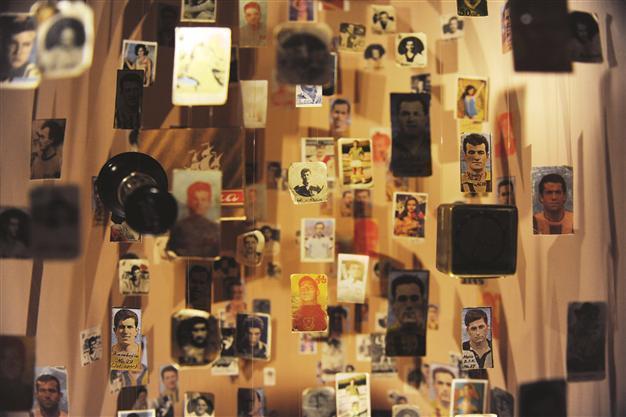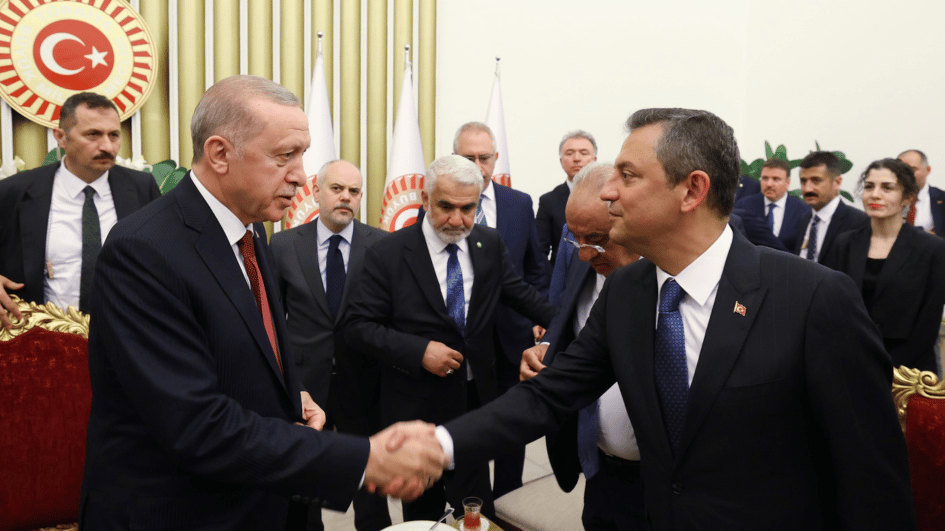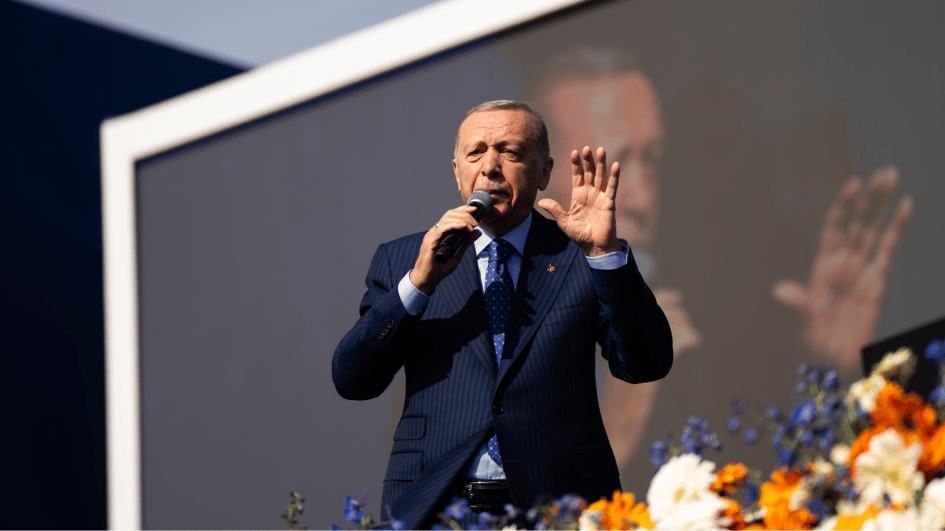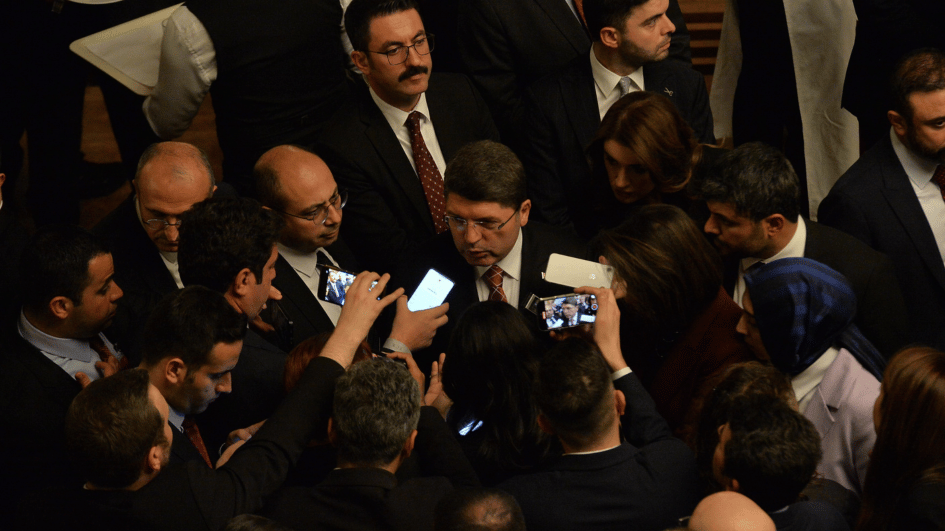Orhan Pamuk opens novel museum
ISTANBUL

The museum is the visual aspect of Kemal and Füsun’s love story. Light that shines from above on the floor illuminates the belongings of Füsun.
Nobel prize-winning Turkish writer Orhan Pamuk realized a long-nurtured dream on April 28 with the opening of an actual “Museum of Innocence” – a collection of relics of a half-century of ordinary life – as depicted in his 2008 novel of the same name, Reuters reported.Pamuk set out “not to do a spectacular or monumental museum but something in the backstreets, something that represents the daily life of the city,” he told a news conference after a press preview.
Situated in a bright, wine-red building in the neighborhood of Çukurcuma, the Museum of Innocence houses real and fabricated artifacts from everyday Turkish life between 1950 and 2000, in homage both to the novel and to Pamuk’s Istanbul.
Pamuk designed the museum with artifacts inspired by Füsun, the lover of the protagonist Kemal in the novel of the same name.
The museum is situated in an old building in Çukurcuma that was made in 1897.
The museum is the visual aspect of Kemal and Füsun’s love story. Light that shines from above on the floor illuminates the belongings of Füsun, providing a visuality to the novel.
Visitors will be able to see 4,213 cigarettes that Füsun smoked, while each story of the museum reflects a period from the past life of Istanbul. In the attic, visitors encounter the room Kemal used to write his novel for many years. The room also features the manuscript for the novel, as well as designs that Pamuk made for the museum.
Pamuk started collecting the belongings in the museum space before he wrote the novel and continued collecting while writing “Museum of Innocence.”
After the completion of the novel, Pamuk added many belongings to the museum along with voice installations.
Pamuk worked with architects İhsan Bilgin, Cem Yücel and Gregor Sunder Plassmann for the museum.
The museum is at 24 Çukurcuma Street in Cihangir.
Pamuk won Turkey’s first, and so far only, Nobel prize when he took home the award for literature in 2006 for his semi-autobiographical work “Istanbul: Memories and the City.”
Füsun’s artifacts
According to Reuters, Pamuk said the museum, which was briefly opened to journalists for a tour on April 13, would draw plenty of visitors even if they had not read the book itself thanks to Füsun’s artifacts, which symbolize daily life in Istanbul during the second half of the 20th century and include small knickknacks, tickets and memorabilia from old movies of Istanbul.
“Our daily lives are honorable, and their objects should be preserved. It’s not all about the glories of the past,” he said. “It’s the people and their objects that count.”
He conceived of the museum more than a decade ago, at the same time he came up with the idea for the novel. A New York Times bestseller, “The Museum of Innocence” was his first books since winning the 2006 Nobel prize.
The book tells the story of Kemal, who hoards ordinary items to recapture the happiness he felt during a passionate but ill-fated love affair, according to Reuters.
The real life museum contains odds and ends that Pamuk collected from Çukurcuma junk shops, family and other donors. There are china dog figurines, old shaving kits and a wind-up film projector. A toothbrush collection, which features in the novel, was contributed by its real-life owner.
Pride of place goes to Kemal’s lover’s 4,213 cigarette butts, lovingly dated, archived and gently pinned to a canvas that occupies a full wall. Pamuk described the painstaking process of vacuuming out the tobacco to prevent worms.
The space was originally meant to open with the book’s publication, but was beset with delays. It took Pamuk – working closely with a team of architects, artists and product designers – another four years to complete the project.
His Nobel prize money of more than 1 million euros did not fully cover costs, he said, declining to specify the exact cost of the museum. Royalties from the book will go toward upkeep.
According to Reuters, while the project is distinctly personal, Pamuk insisted it is not autobiographical.
His protagonist Kemal is far too obsessed with his love and his compulsive hoarding to pay much attention to the social and political upheaval around him. His story takes place in Istanbul in the 1970s, a decade bookended with coups.
Pamuk is now at work on a new book told from the view of a street vendor eking out a living in one of sprawling Istanbul’s shantytowns. His first book, 1982’s “Cevdet Bey and His Sons,” is now being made into a serial for television, said Reuters.
Additional reporting from Reuters
PAMUK’S MANIFESTO
Nobel Laureate Orhan Pamuk has issued a “manifesto” to explain and accompany his Museum of Innocence, a visual manifestation of aspects of his novel of the same name. The manifesto was published in daily Taraf before being released to the international media. Pamuk says he loves museums and has felt very happy in museums in the past. “Because I take museums seriously, I sometimes get angry about them, but I don’t want to speak about museums with anger. There were too few museums in Istanbul in my childhood; most of them were historical structures under protection. Later on, small museums in European cities made me feel that museums could tell the stories of individuals.

















